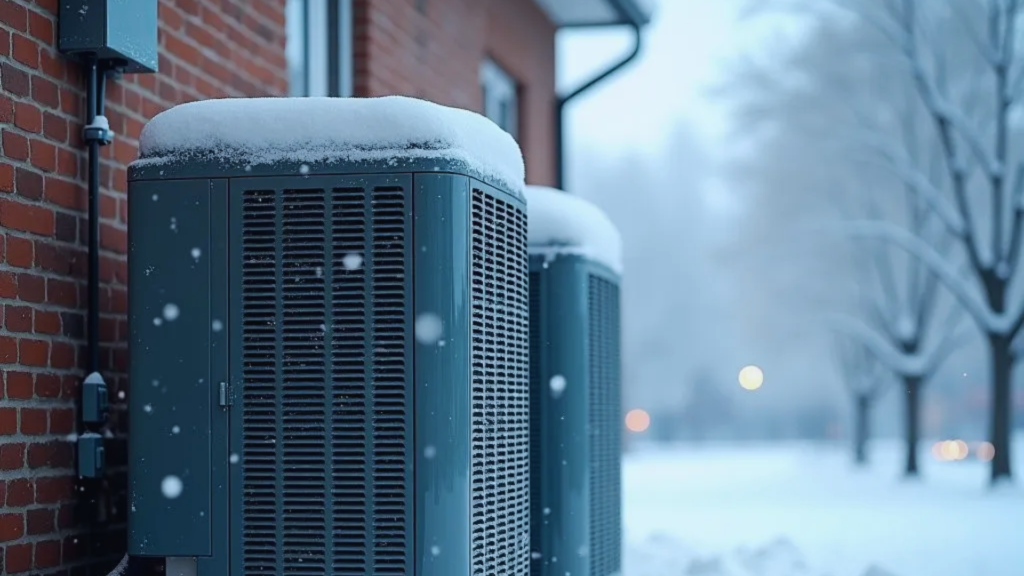Behind Service Experts’ equipment leasing approach
A conversation about the economics of leasing HVAC systems, positioning the model to customers, and the barriers to broad U.S. adoption

Image: Service Experts
In Canada, driven initially by utility companies as a complement to gas services, homeowners commonly lease their HVAC systems and water heaters, rather than buy them outright. But the approach has gained little traction in the U.S.
Given the setup, I spoke with Nicole Celiscar, Sr. Director of Financial Products at Texas-based Service Experts, one of the few companies operating a large-scale leasing program in the U.S., about the model’s economics, positioning it to customers, and the barriers to broader adoption. Below is our conversation, lightly edited for clarity.
At a high level, what’s the basic logic, and how does this actually work?
Our ‘Advantage’ program has helped us move our business from what has historically been transactional and volatile to stable, recurring, and utility-like. Customers and businesses can ‘lease’ comfort systems without the stress of upfront costs or surprise repairs.
Instead of the customer paying one lump sum up front for their HVAC system, where they’re also responsible for servicing and maintenance, for a monthly fee, we’ll install equipment and take care of all the service and maintenance.
Can you give me some color on the economics?
It ranges depending on the type of equipment installed, but let’s say a customer is paying $150 a month. We front the cost of labor, parts, equipment, everything. It’s capital-intensive, so it’s really enabled by scale — we have around 100 wholly-owned locations across the U.S. and are backed by Brookfield Infrastructure.
Our size allows us to leverage our balance sheet to front the capital. The overall cost to the customer is slightly higher than a typical loan product, but it includes all the service and maintenance.
How much more does it typically end up being to the customer?
It depends on the product and exactly what the customer gets, but compared to a traditional loan, it might range from $10 to $30 more per month. But again, the program covers service and maintenance, whereas traditional loans don’t.
Has the program ‘surprised’ you in any way that’s helped the business from a strategy standpoint?
We launched it in 2017 with just HVAC, but recognized there was a lot of customer interest in other products, like whole-home filtration systems and water heaters. And the same goes for generators in markets with frequent power outages.
So we’ve seen that it actually makes customers stickier because they’re interested in bundling, which helps us expand our share of wallet.
Since you’re essentially acting as the lender, bearing the liability, what have you noticed regarding defaults?
We see very low no-pay rates, along with very low default rates, because the products are essential — hot and cold air, hot and clean water.
We’ve even seen cases where customers hit tough financial times, and they choose not to pay other bills before ours, just because of the criticality of the service. Water bills, electricity bills — those tend to get prioritized over others.
Over the last few years, we’ve seen that customers wanting this product are prime customers with high FICO scores. They can pay upfront, but they choose to pay a monthly fee for peace of mind.
How do you position and market it to customers without confusing them?
Number one, we don’t overcomplicate it. ‘Lease’ isn’t a scary word. The good news for the customer is that we own the burden, and they don’t have to worry about it. It also doesn’t have the same ‘loopholes’ as a car lease, for example, where you still have to pay for maintenance and repairs.
Customers are already subscription-minded; everyone has some sort of subscription. The comparison that resonates with a lot of customers is electricity. When you flip the switch, the lights come on. You don’t ‘own’ the large electrical systems that drive energy to your home.
And when there’s a damaging storm, somebody takes care of it. The hardest thing you have to do is make a phone call. You don’t pay extra for it. This is the same concept, just for home comfort.
Still, I imagine there are objections. What are some common ones?
The big one is, ‘I don’t like leases.’ But we’ve been able to move past that because they generally anchor that to bad experiences elsewhere, like car leases, as I mentioned. Ours is a robust lease without those same caveats. Customers are assured that anything related to the equipment itself — the install, the ongoing usability — is on us.
In your opinion, why isn’t the model more popular in the U.S.? A general lack of consumer awareness? The fact that most contractors don’t have Service Experts’ scale?
I think it’s both. To me, anytime a new product enters the market, there can be hesitancy because of the unknowns. But over time, and remember, we’ve been offering this for over seven years, it becomes more commonplace, and the consumer mindset shifts.
Scale also does come into play because you need capital to front the costs. The average ticket for an HVAC system may be $10,000 to $15,000, so the cost of labor and equipment is high, and you need capital to support that, especially if lots of customers are choosing it, so I think that’s been a barrier for sure.
But we’ve seen adoption increase significantly over the last few years, with more and more customers understanding the value proposition, and we believe it’ll be widely adopted over the next few years.
📬 Get our stories in your inbox
Keep reading
42 minutes with Chiirp’s dealmaker Justin Judd
January 8, 2023
Trump admin lays off staff of low-income HVAC program
The administration last week fired the team managing a $4 billion program that helps low-income households pay for heating and cooling bills
The HVAC industry has seen consolidation — but it’s not over yet
A combination of consumer dynamics, fragmentation, and investor timelines will drive more consolidation


